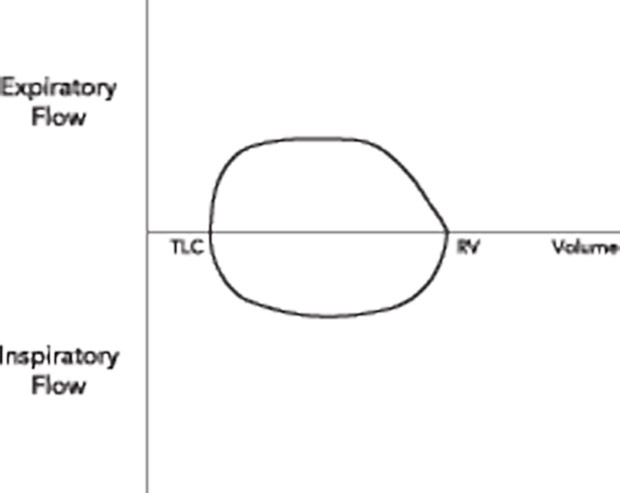Big changes made to E/M codes in 2021
Beginning in January, physicians billing for Medicare patients no longer have to use a patient's history or physical exam to determine the appropriate level of E/M coding.
There is widespread belief in the medical community that when it comes to office visit evaluation and management (E/M) services, internists are overburdened and undervalued. Although these services comprise the bulk of most internists' daily practice, there has been a growing sentiment for several years that important changes were necessary to ensure that doctors were spending less time on administrative hassles and more time with patients. Some relief took effect on Jan. 1, 2021. It is important to recount what led to these calls for action.
Historically, physicians have faced significant burdens in reporting these codes. The increasing use of electronic health records (EHRs) and their integration into physician practices has led many physicians and staff to struggle with meeting confusing documentation requirements. For example, in a study published in Family Medicine in 2018, the CDC found that the use of EHRs increased from 35% in 2007 to 87% in 2015. Additionally, when the E/M codes were last revalued in 2010, it could be argued that CMS used flawed methodology because it did not adjust the physician time used to value these services, nor were all specialties that billed these codes represented in the data used to value these codes.
CMS leadership agreed that substantial changes to the outpatient E/M code set were necessary and proposed a major overhaul during its annual rulemaking cycle in summer 2018. During this time, CMS proposed, through the Medicare Physician Fee Schedule (MPFS) Final Rule, to revise the documentation requirements so that physicians could document patient visits using time or medical decision making. The agency also proposed to collapse payment levels for E/M codes. Despite widespread support for the documentation proposals, the valuation changes would have inadvertently penalized some physicians through no fault of their own.
As a result of these proposals, the Relative Value Scale Update Committee (RUC) convened an E/M workgroup in February 2019 to study this issue and develop recommendations for improving upon the changes proposed by CMS. ACP and several other medical societies were active participants in this workgroup, which ultimately led to these recommendations being developed into CPT code description changes. These changes called for deleting 99201 (E/M, new patient), using time or medical decision making as the only element of code selection, and realigning the time associated with certain codes.
Following the acceptance of the CPT application by the American Medical Association (AMA)'s CPT Editorial Panel, the RUC undertook a physician survey of the outpatient E/M codes. According to the AMA, the survey had the most responses in the history of the RUC process, with nearly 1,700 physicians completing it. Following the completion of the survey and an evaluation of the results, specialty societies recommended and the RUC accepted increased valuations for the outpatient E/M codes. Now, it was up to CMS to determine whether the agency would accept, ignore, or modify the revised code set, its guidelines, and modified valuations.
CMS made clear with its publication of the 2020 MPFS proposed rule that it agreed that the outpatient E/M code set was in need of an update. The CMS proposed rule accepted the revised outpatient E/M code set, its guidelines, and the RUC's increased valuation of these services. However, there was one caveat. These changes would go into effect on Jan. 1, 2021, to give physicians time to understand them and ensure that they would be consistent with the CPT publication timetable. In the proposed rule, CMS reversed its decision to collapse the four code levels into one. Following a robust comment period, CMS largely finalized its proposed changes in the 2020 final rule.
Beginning in January 2021, physicians billing for Medicare patients no longer have to use a patient's history or physical exam to determine the appropriate level of E/M coding. While physicians may still perform a physical and determine a patient's medical history, they no longer have to use two out of the three elements (history, exam, and medical decision making) to determine the level of E/M coding to bill. Instead, physicians can choose from either time or medical decision making to determine code selection.
Time
Physicians billing Medicare may use total time to determine the level of E/M coding to bill. Time is determined by the total time on the date of the encounter. This includes both the face-to-face and non-face-to-face time spent that day by the physician and other qualified health care professionals. The following activities count toward the total time:
- preparing to see the patient (reviewing tests, etc.),
- obtaining and/or reviewing separately obtained history,
- performing a medically appropriate examination and/or evaluation,
- counseling and educating the patient/family/caregiver,
- ordering medications, tests, or procedures,
- referring and communicating with other health care professionals (when not separately reported),
- documenting clinical information in the electronic or other health record,
- independently interpreting results (not separately reported) and communicating results to the patient/family/caregiver, and
- coordinating care (not separately reported).
Medical decision making
Alternatively, physicians billing Medicare may continue to use medical decision making to determine E/M code selection. This involves the following three elements:
- the number and complexity of problem(s) that are addressed during the encounter,
- the amount and/or complexity of data to be reviewed and analyzed, and
- the risk of complications, morbidity, and/or mortality of patient management decisions made at the visit associated with the patient's problem(s), the diagnostic procedure(s), and treatment(s).
Once physicians have reviewed these elements, they are able to determine the level of medical decision making: straightforward, low, moderate, or high. In turn, this determination allows for the appropriate code selection.
Other changes
Internists billing Medicare will also see some additional changes in January 2021. CPT code 99201 was previously used to report and bill for E/M services for new patients. However, beginning in 2021, physicians are no longer able to report E/M code 99201. During the CPT Editorial Panel's deliberation over the coding changes, the panel decided that medical decision making between 99201 and 99202 was relatively straightforward, and CMS ultimately agreed. Additionally, the panel determined that the only difference between 99201 and 99202 was the history and exam elements. Henceforth, physicians should consider the medical decision making or time guidelines to determine which code to bill in place of 99201.
2021 also brings changes to the prolonged services code set. Starting in 2021, physicians can bill a new prolonged services code (99417, Prolonged office or other outpatient evaluation and management service[s], each 15 minutes) that captures prolonged services in 15-minute increments. This new code can be billed with CPT codes 99205 and 99215 when time is used as the primary basis for code selection.
CMS may also introduce a new way to bill for E/M office visits, describing the complexity associated with visits that serve as a focal point for all medical care or for ongoing care related to a patient's single, serious, or complex chronic condition. Beginning January 2021, a new Medicare-specific code (GPC1X) may be available for use. Currently, guidance on the types of physicians who can bill this code is relatively broad. ACP is actively working with CMS and other medical specialty societies to refine this new code to ensure that physicians have as many resources as possible to continue to provide maximum care for their patients.
It is important to note that all of these changes are reflected in the Medicare program. While many private insurance carriers often update their policies to reflect actions taken by CMS, they are under no obligation to do so. Will these carriers update their E/M policies to reflect these positive changes? ACP has been working diligently to encourage private payers to do so and ensure that physicians and their practices are playing by one set of rules in order to limit confusion and allow them to spend less time on paperwork and more time with their patients. Either way, big changes are coming, and ACP will continue to ensure that our members are prepared.




